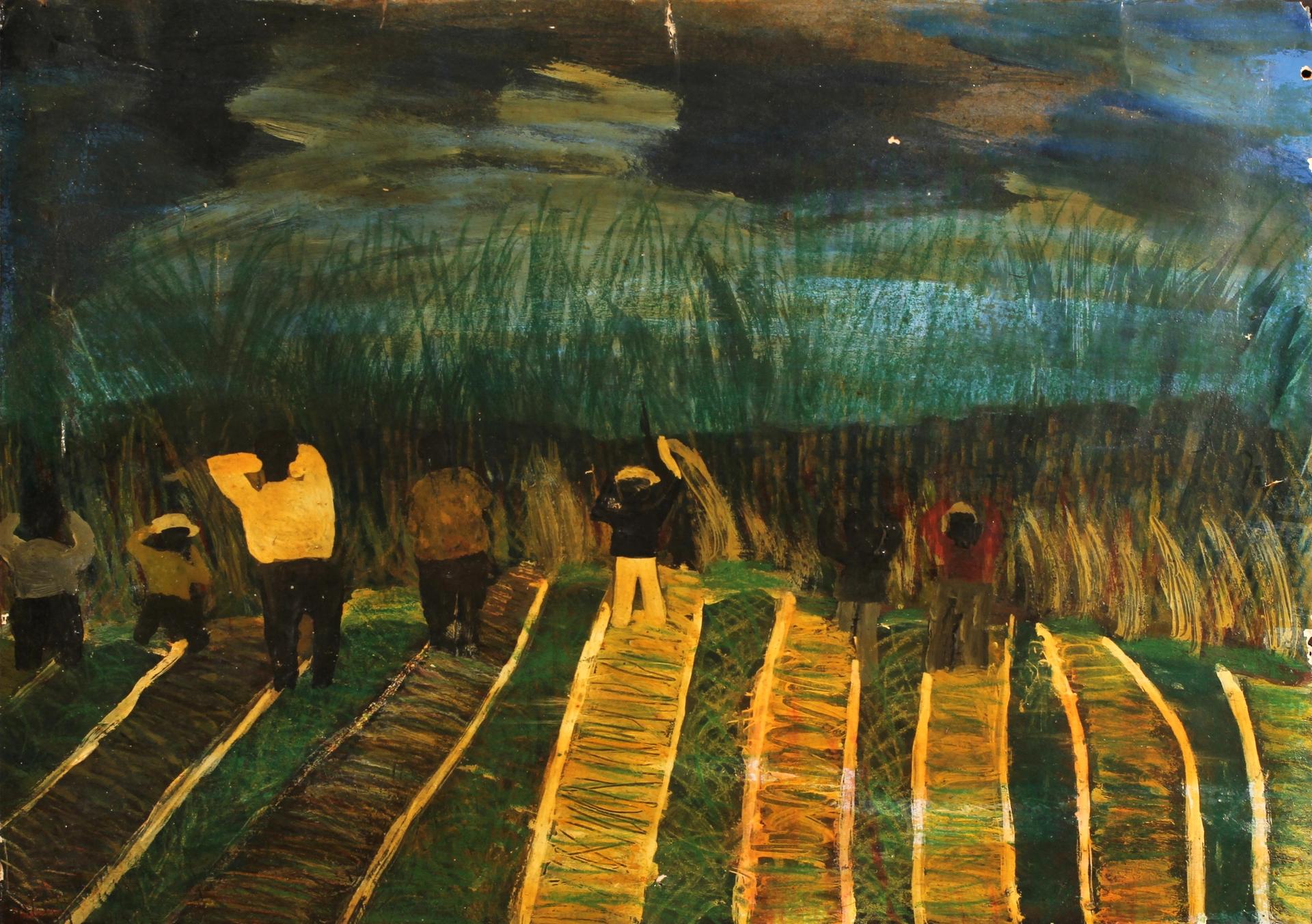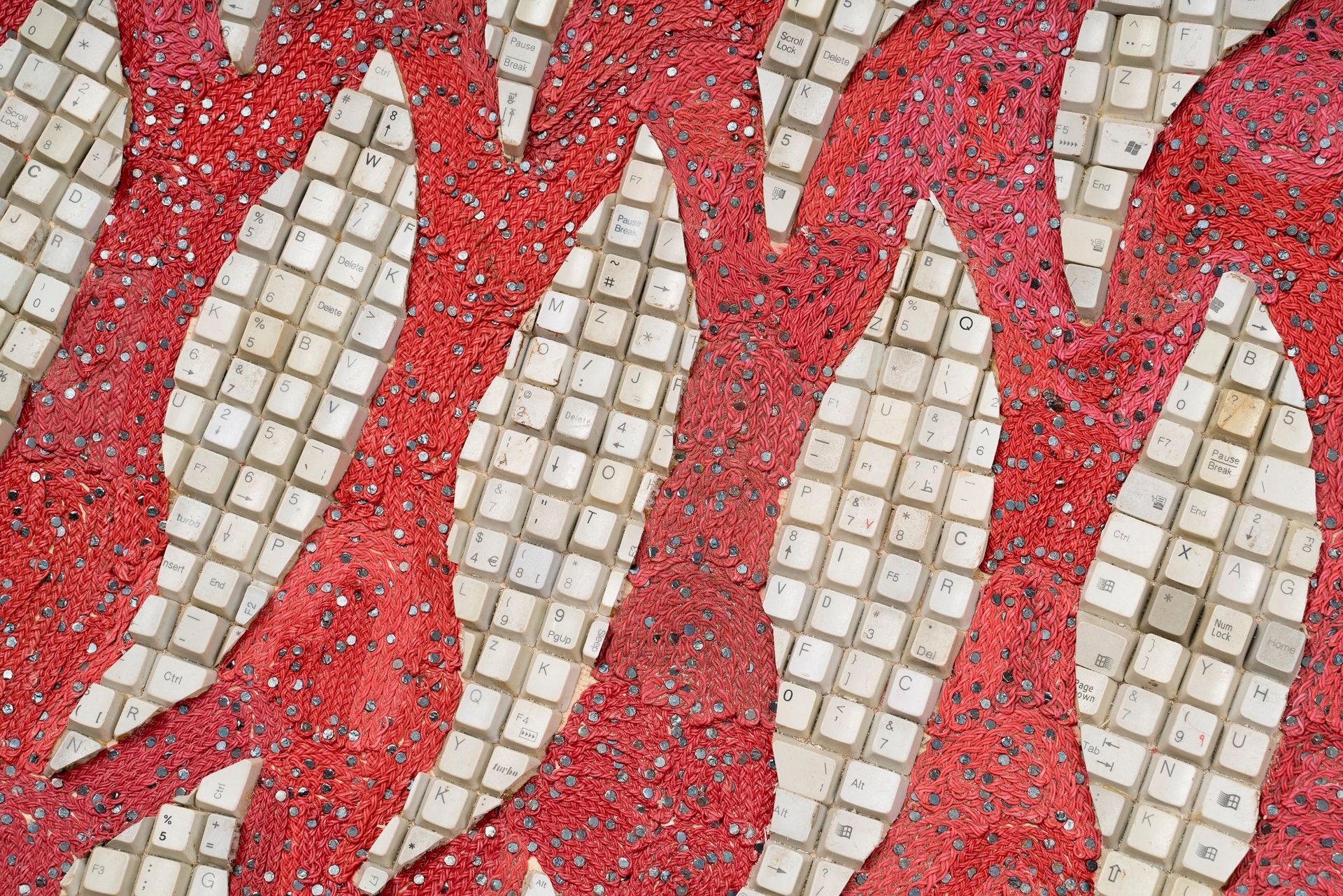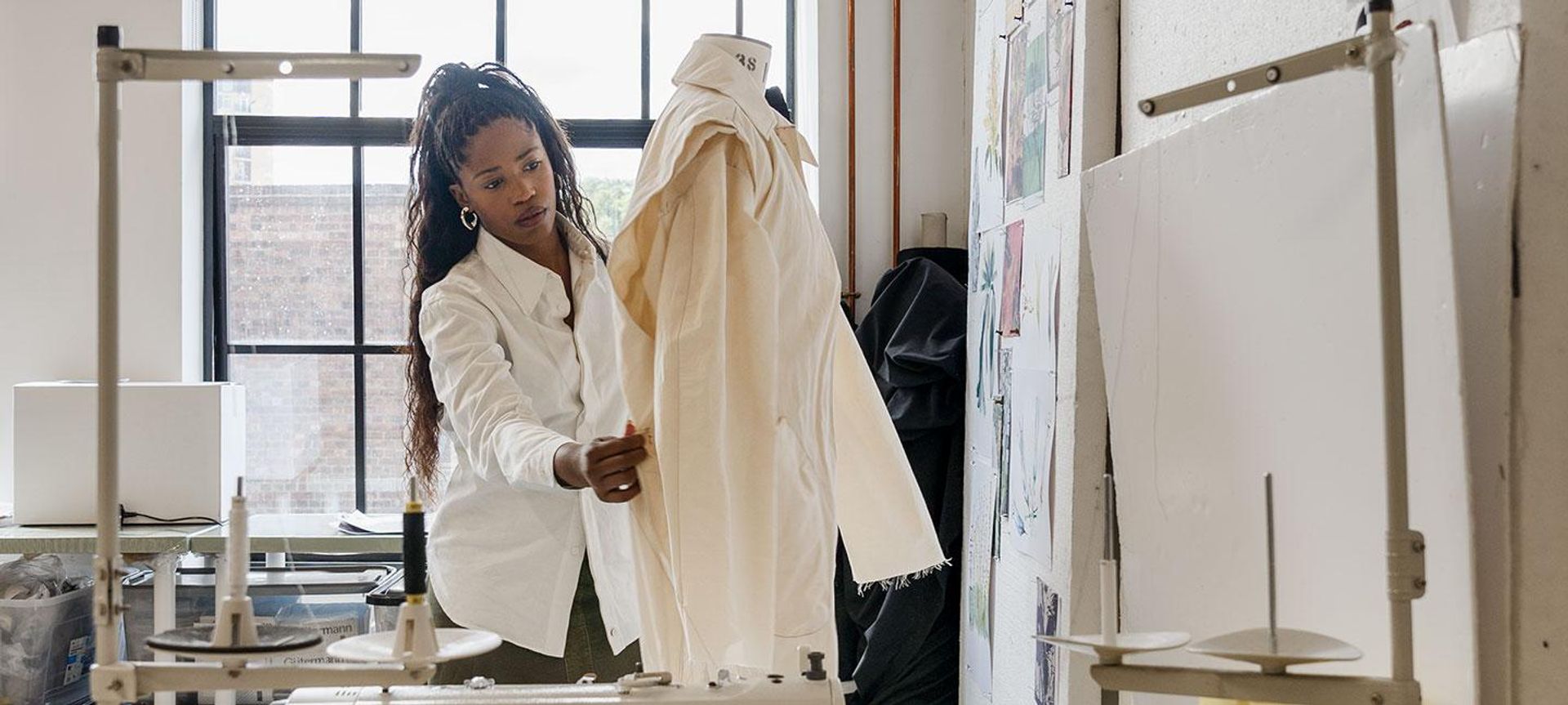Wangari Mathenge: A Day of Rest, Pippy Houldsworth Gallery, until 4 November
The Kenyan-born artist Wangari Mathenge returns to London with her second solo show in the city. On display are the artist’s paintings and installation from her latest series, A Day of Rest, which explores the plight of domestic workers in Kenya—often women who through the country’s precarious labour laws are left unprotected from mistreatment and abuse. The paintings are portraits of actual Kenyan women who Mathenge invited to relax and tell stories in her studio last year. “Mathenge joined them in varied discussions that included subjects such as spirituality, finances, education, feminism, and the need for rest and reflection,“ a gallery statement says.
Stand out works include for Norah and Nick, an intimate portrait of two women—one busying herself facing away from us and the other in bed with arms crossed contemplatively. Another is para mi (2023) a portrait of a woman resting on the floor with the skirt of her dress riding up in a moment of blissful unguardedness.

Frank Walter’s Plantation Field and Workers (undated)
Frank Walter: Artist, Gardener, Radical, Garden Museum, until 24 February 2024
More than 100 never-before-seen paintings and sculptures by the Antiguan artist, writer and environmentalist are on view at London’s Garden Museum. Walter had a complicated relationship with the island, being the son of both enslaved peoples and German slave owners, as well as the first Black man to manage a plantation in the country. This is evident in paintings such as the gilded yet foreboding Plantation Field and Workers (undated)—a scene as vibrant as it is unsettling.
Walter’s body of work comprises “5,000 paintings, 1,000 drawings, 600 sculptures, 2,000 photographs, 468 hours of recordings, and a 50,000-page archive. according to the museum. The exhibition gives us just a glimpse of his unrelenting production and as well as his attention to nature, while also looking at his interest in social justice and Black and Caribbean identity.

Detail from Tightrope Concave Triangle #2 (2020)
Courtesy the artist & GRIMM & James Cohan Gallery. Photo: Jonathan de Waart
Elias Sime: Eregata እርጋታ, Arnolfini, 21 October-18 February 2023
A survey of recent works by Ethiopian artist Elias Sime opens at Bristol’s Arnolfini gallery this weekend. Visitors can see Veiled Whispers (2021), one of the canvases Sime’s made for the 2022 Venice Biennale Milk of Dreams exhibition, as well as work from the artist’s exhibition Tightrope, which travelled across various North American institutions between 2019 and 2021 and will now have its UK debut.
Sime is best known for his large-scale installations that repurpose consumer electronics, among them Tightrope Concave Triangle #2—a flame-like triangle made out of electronic wires and computer keys that will be on display at the Bristol show. The name for the series “recognises the uneasy balance between the advances made possible by technology and the impact they have had on our humanity and environment”, the Wellin director Tracy Adler told The Art Newspaper last year.

Installation view of Hyundai Commission: El Anatsui’s Behind the Red Moon
Photo ©Tate (Joe Humphrys)
El Anatsui: Behind the Red Room, Tate Modern, until 14 April 2024
Part of the power of El Anatsui’s monumental Hyundai Commission lies in the way it conveys different ideas and feelings depending on where the viewer is standing. Looked at up close, the large hanging works reveal their connection to industry—the crushed cans and bottle tops from which they are made being clearly visible—while from afar they take on a majestic quality.
The commission is split into three parts. In Act I: The Red Room the recycled materials form billowing sails, making material the tension between the transatlantic slave trade and the commodities people consume and trade to this day (gold, sugar, spirits).
Act II: The World, meanwhile is a particular highlight of the commission, featuring loose forms that suggest a “world“ both breaking apart and coming together. The final act, The Wall, is inspired by Anatsui’s interest “the ancient story of the earthen wall of Notsie (present-day Togo),“ a museum statement says. The story follows the Ewe people (of Togo and Ghana) who fled the tyrannical rule of King Agorkoli via the gates of the wall. Anatsui’s wall, however, is ethereal in nature—its shimmering material evoking a porousness which invites visitors to peek through.

Bianca Saunders working on a sample of her commission at her Hackney studio
Photo: Anne Tetzlaff; Courtesy of Somerset House
The Missing Thread: Untold Stories of Black British Fashion, Somerset House, until 7 January 2024
The Missing Thread‘s mission is to redress an imbalance in British design history by spotlighting the work and influence of Black British designers on mainstream style. It is split across four themes: home (a steel domicile installation provides the exhibition’s entry point), tailoring (with exhibits including the 2009 England football kit designed by Charlie Allen and the work of leopard print trailblazer Ninivah Khomo), nightlife (with nods to dancehall and the garage and jungle scenes) and performance (which examine the way style, hair and language became means of resistance and self-preservation in a discriminatory society).
Also on view in the exhibition—and for the first time in the UK— is the late fashion designer Joe Casely-Hayford’s archives. There is also work by the contemporary designers Bianca Saunders and Nicholas Daley and Ozwald Boateng, as well as an installation celebrating Boateng’s pioneering work at Givenchy.
The Missing Thread shows the links between design and significant events in Black British history and the development of Black British culture in the 20th and 21st century, too. The “home” portion of the show, for example, includes photographer Pogus Caeser’s documentation of the 1985 Handsworth Riots, which followed the arrest of an African Caribbean man. These photographs, as well as others works in this section by the artists Chris Ofili and Maud Sulter, tie in to themes such as the tension of belonging.
